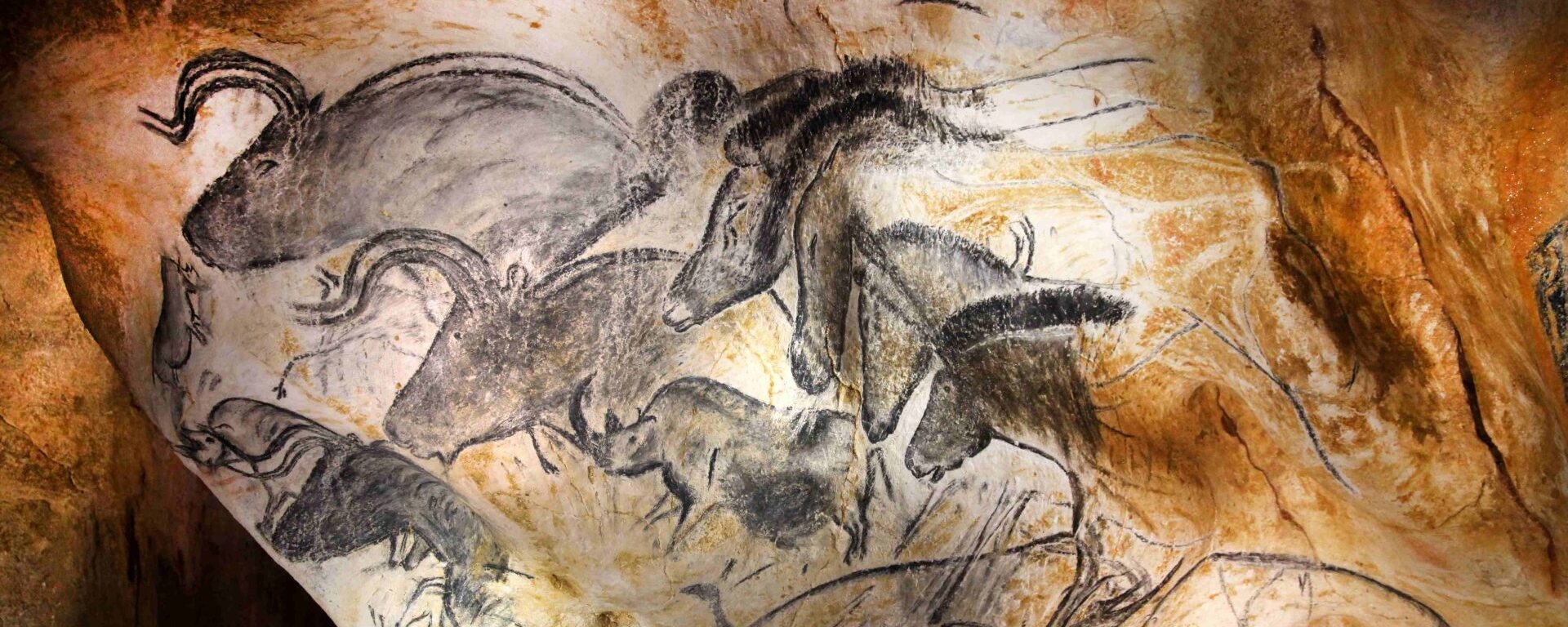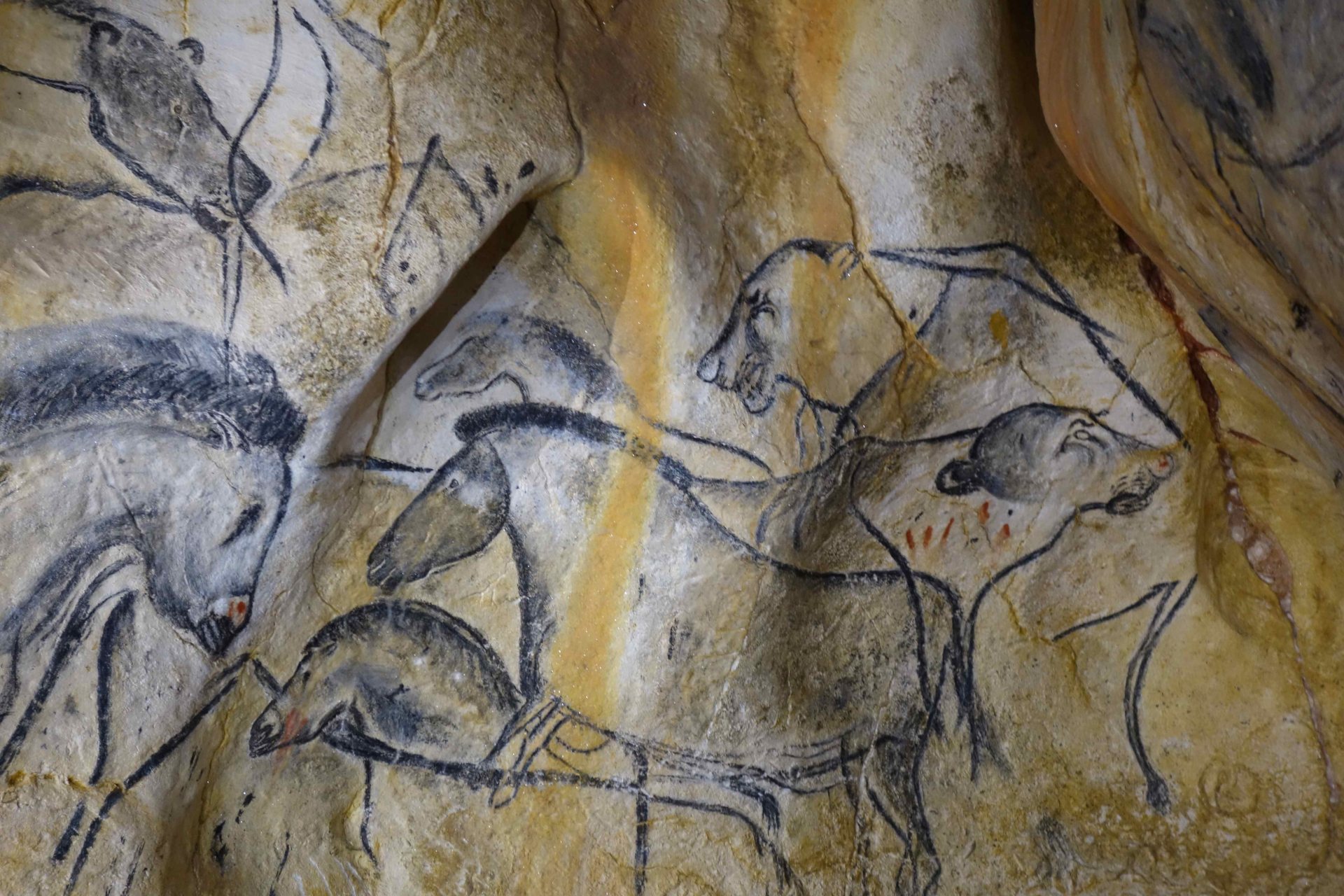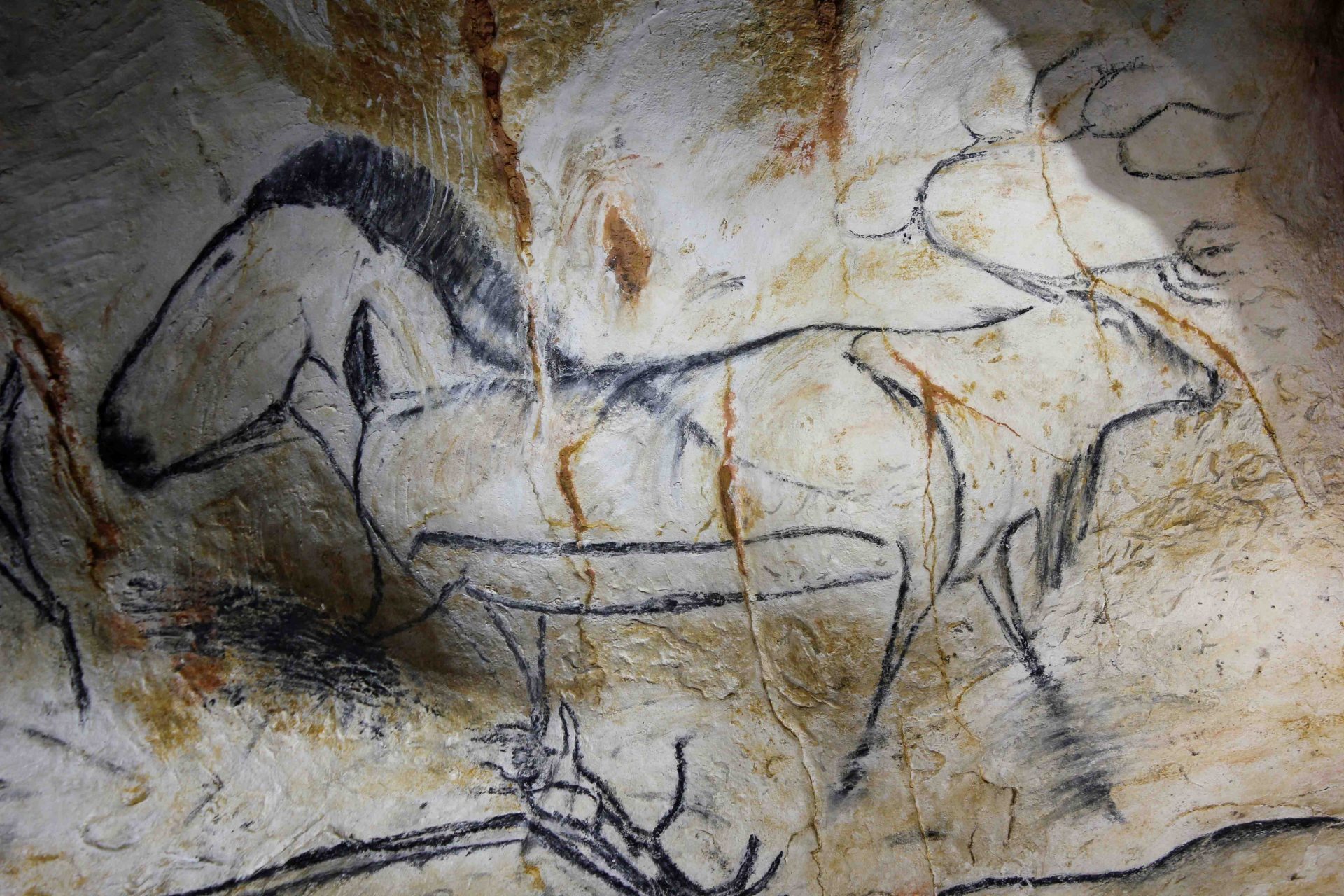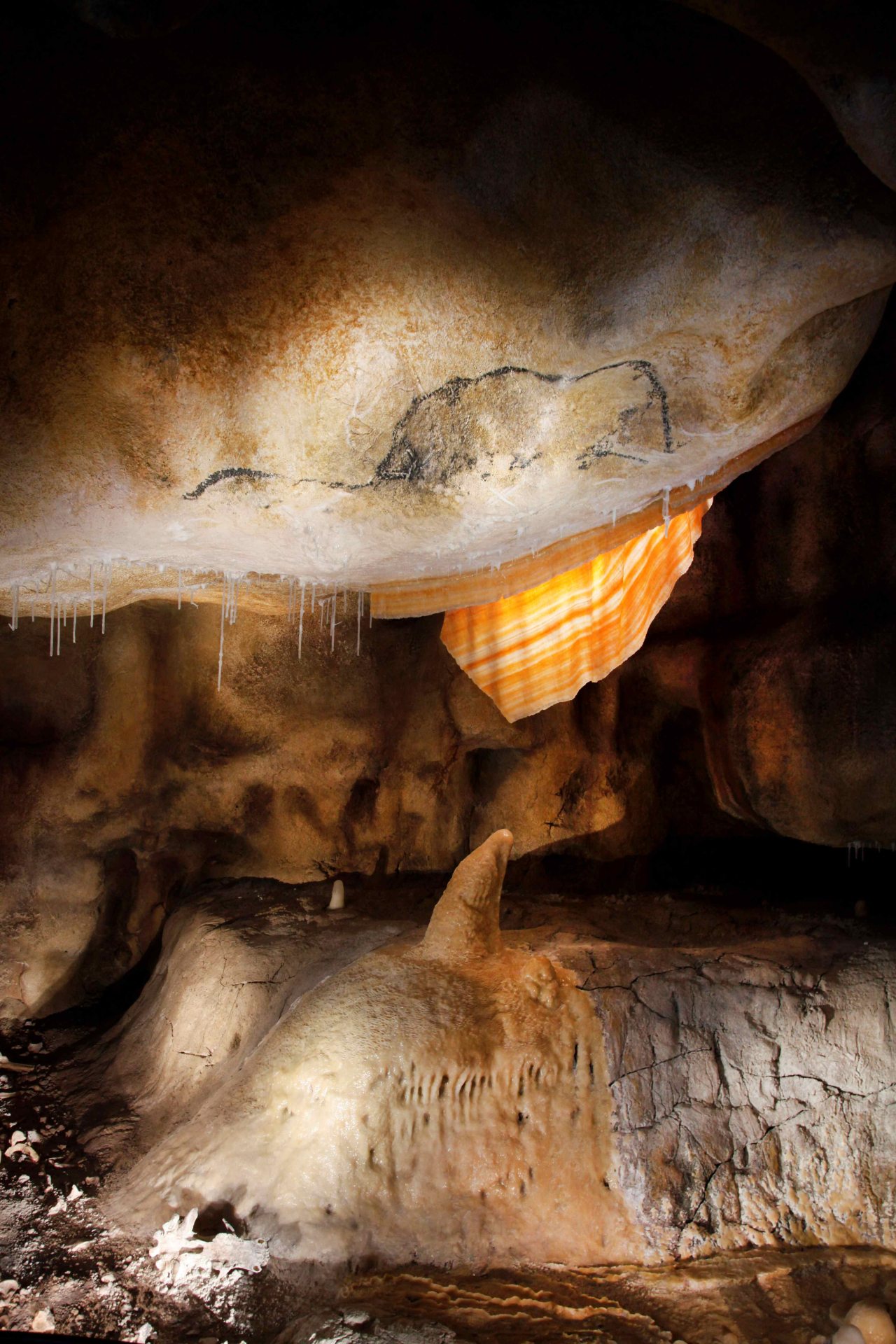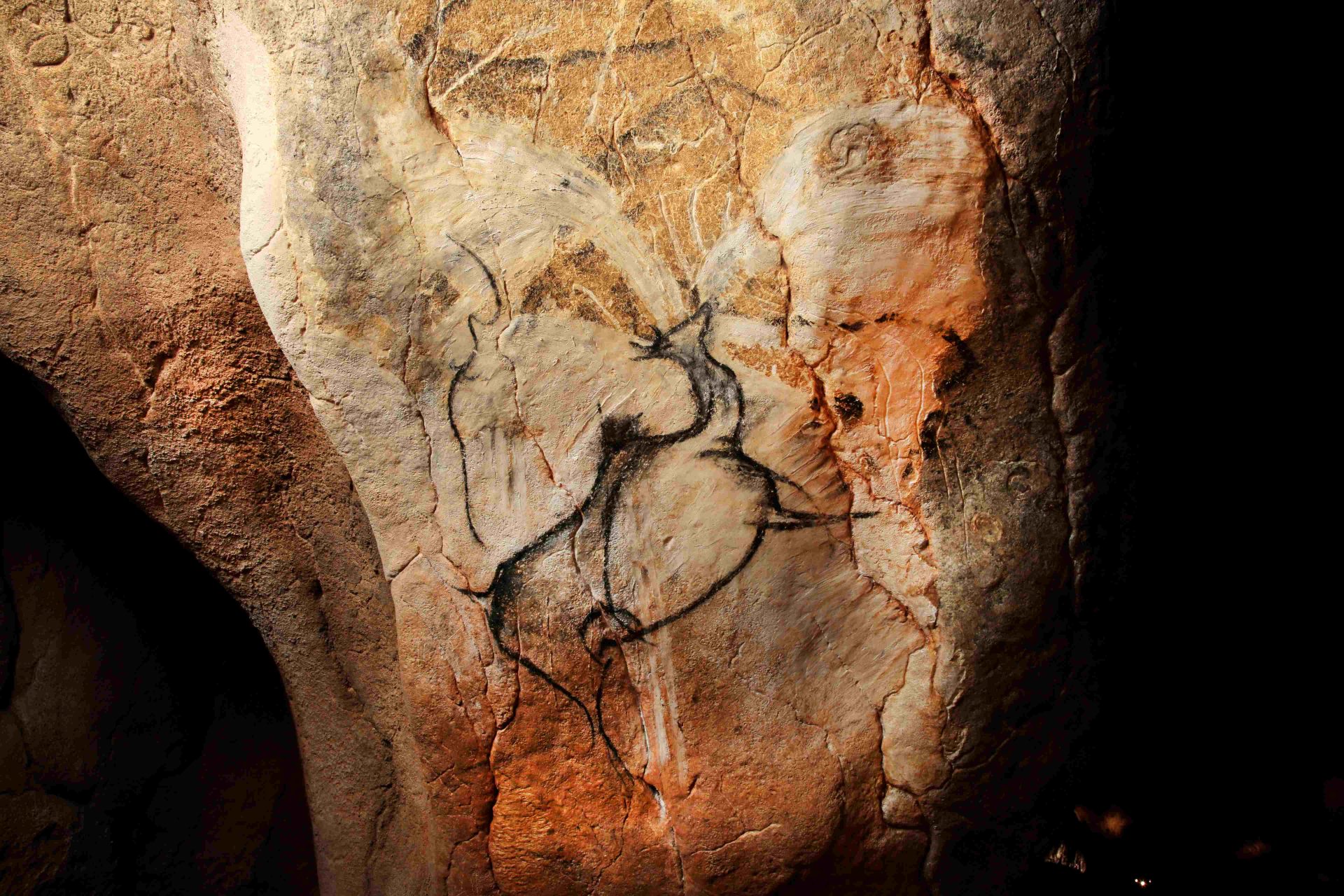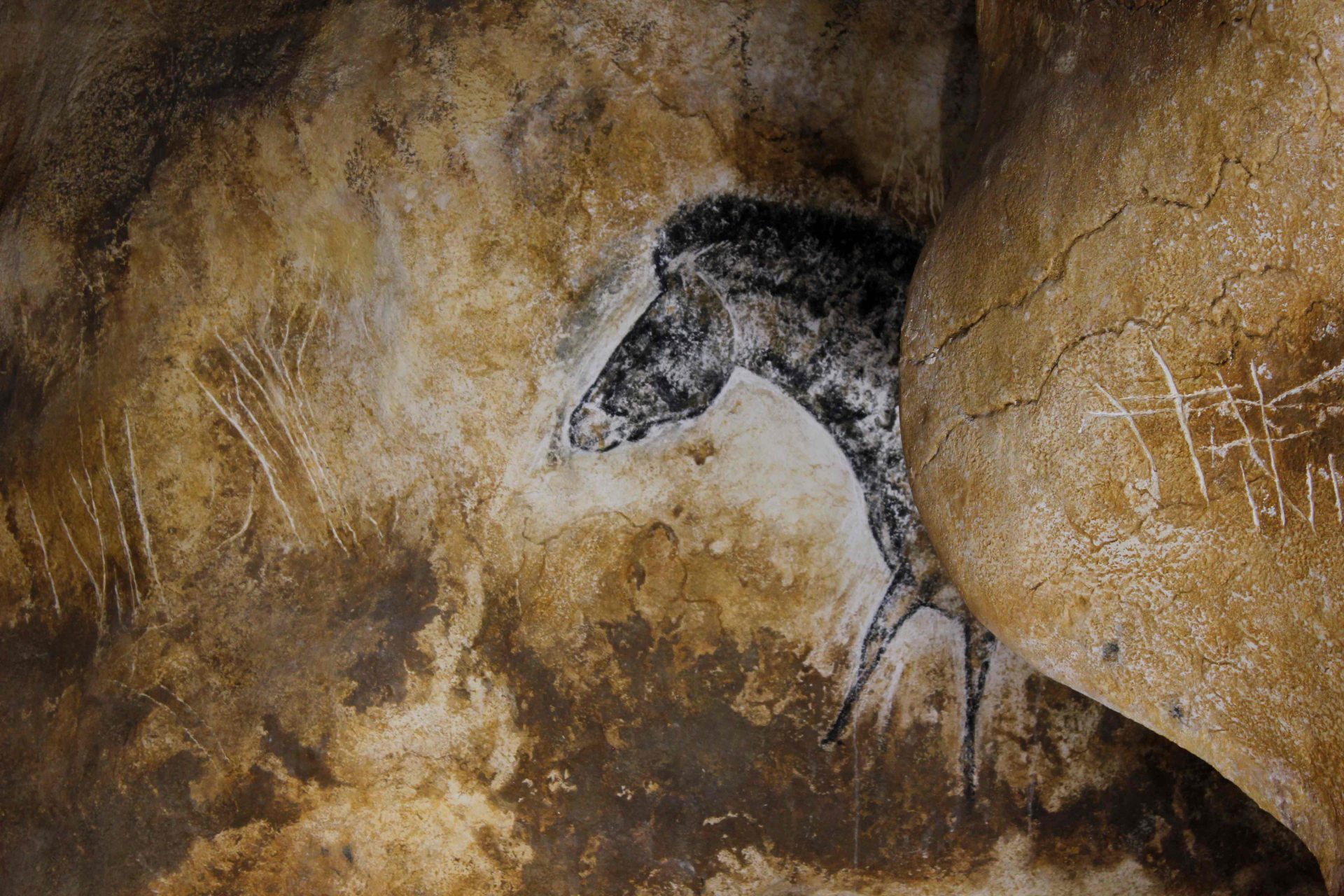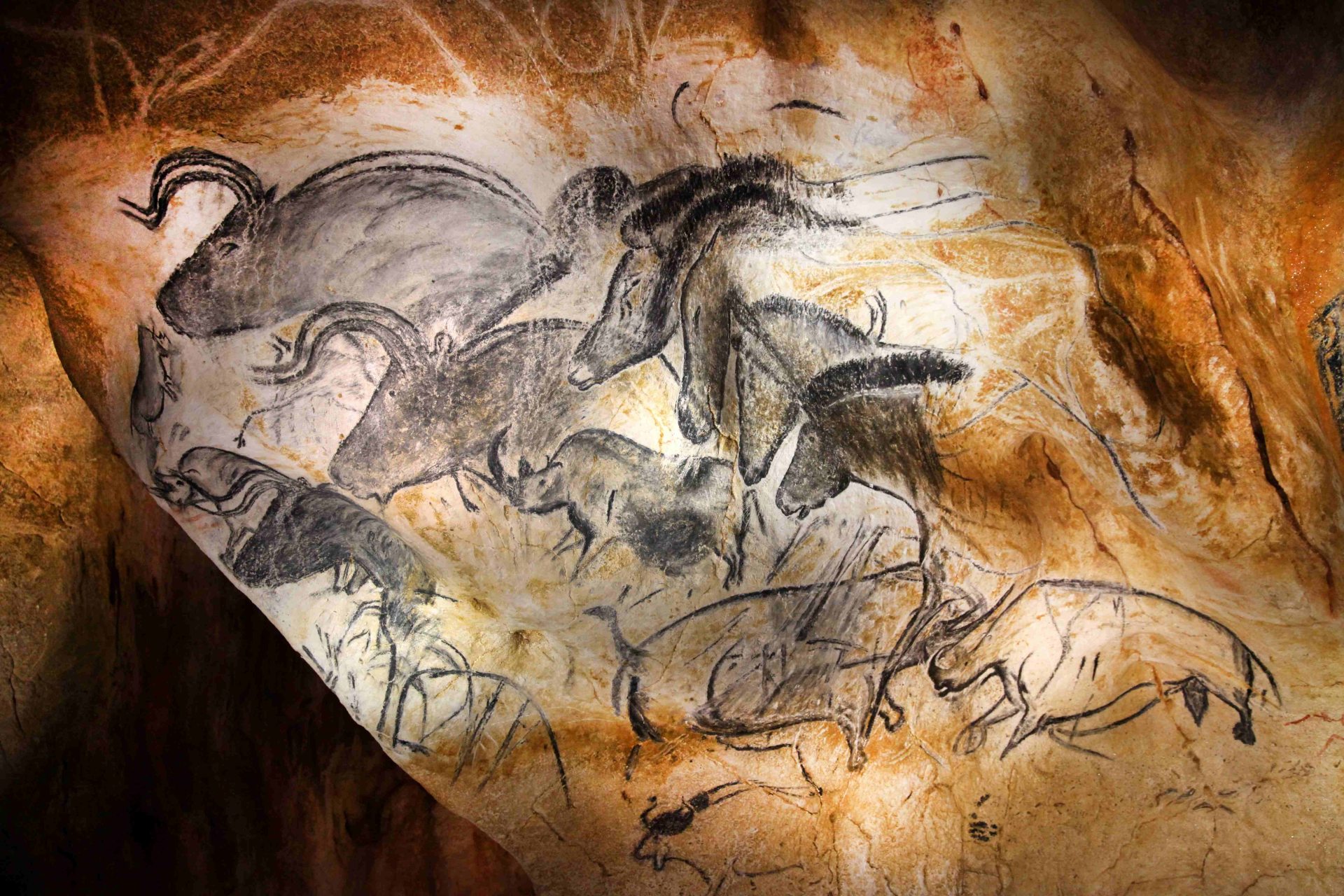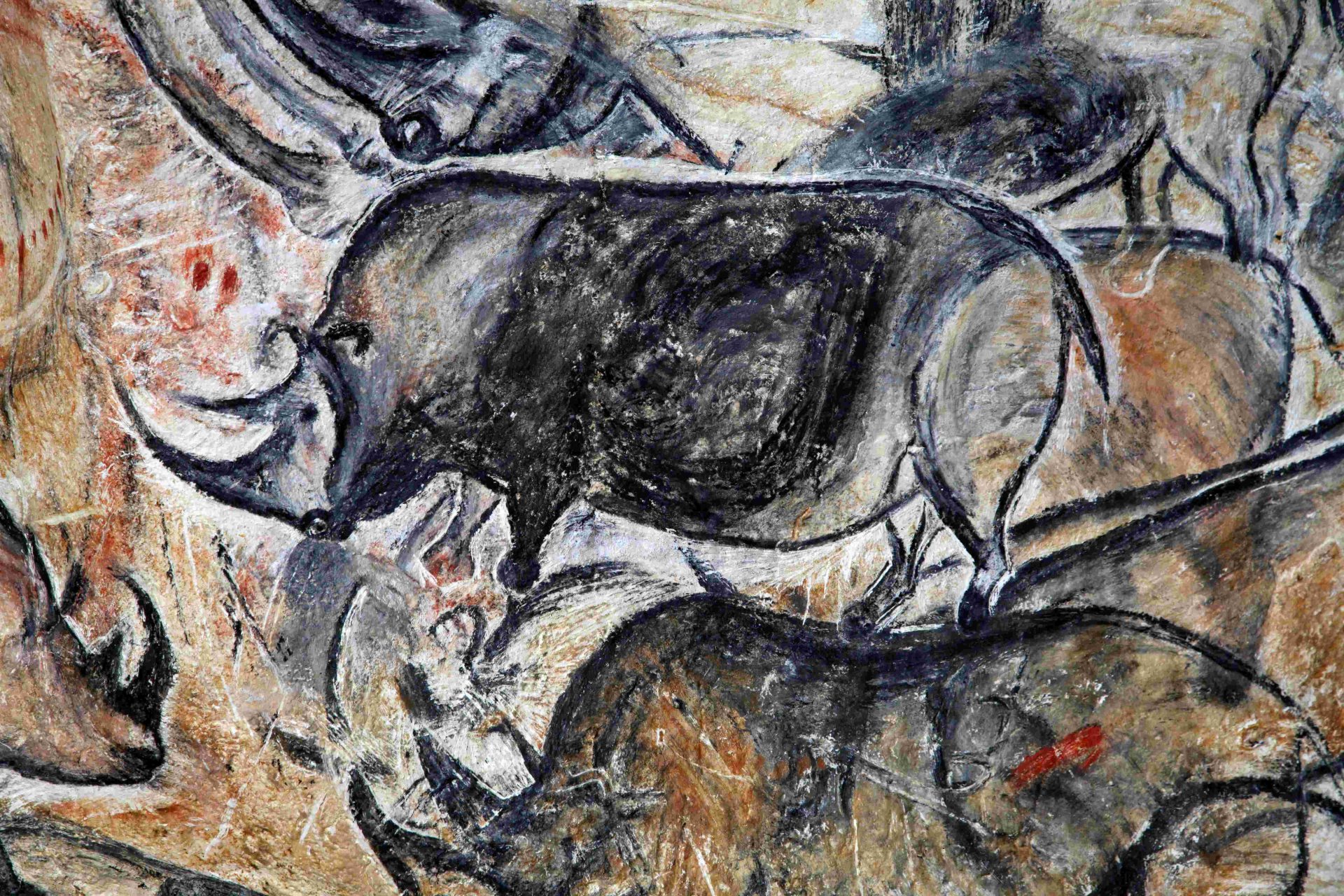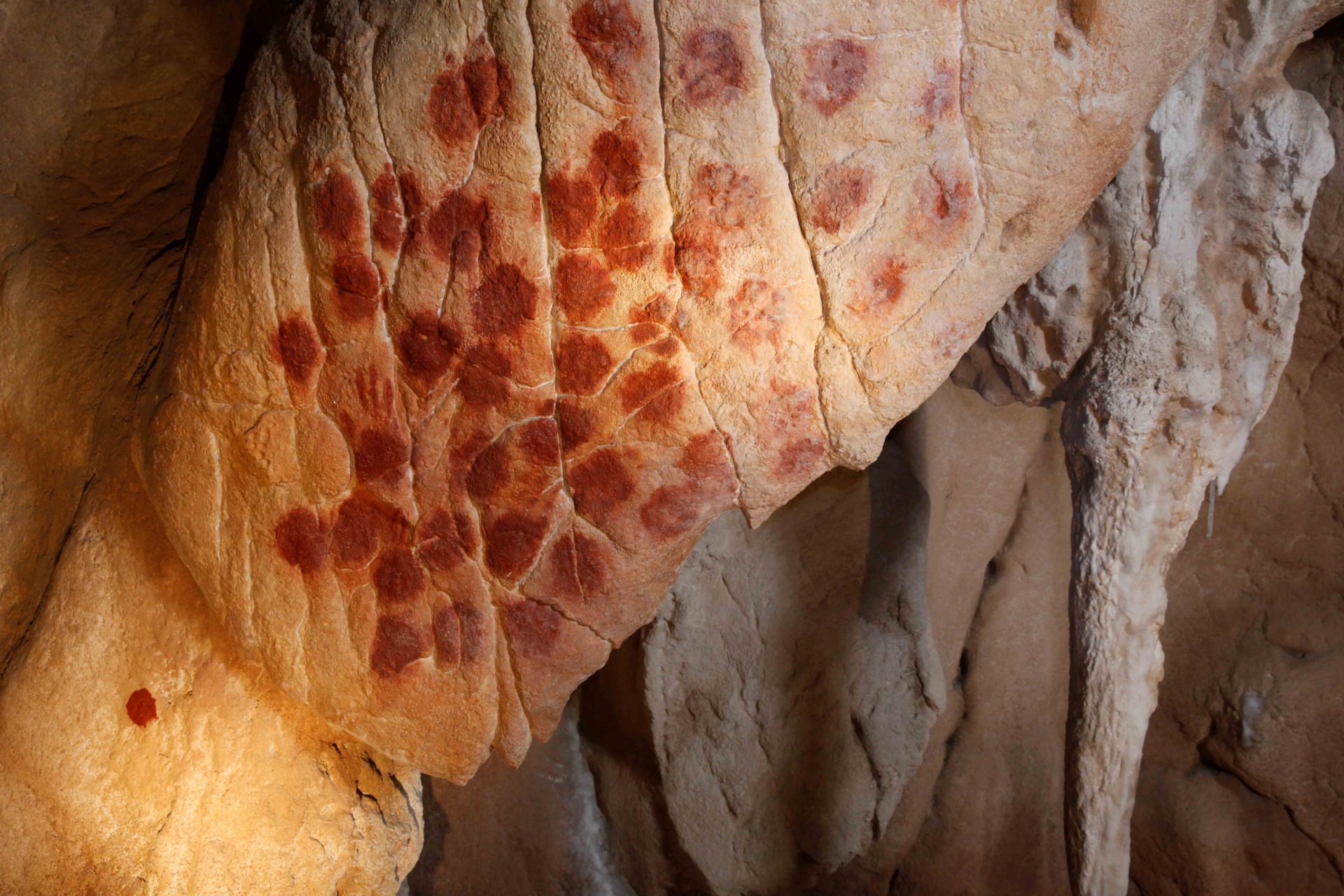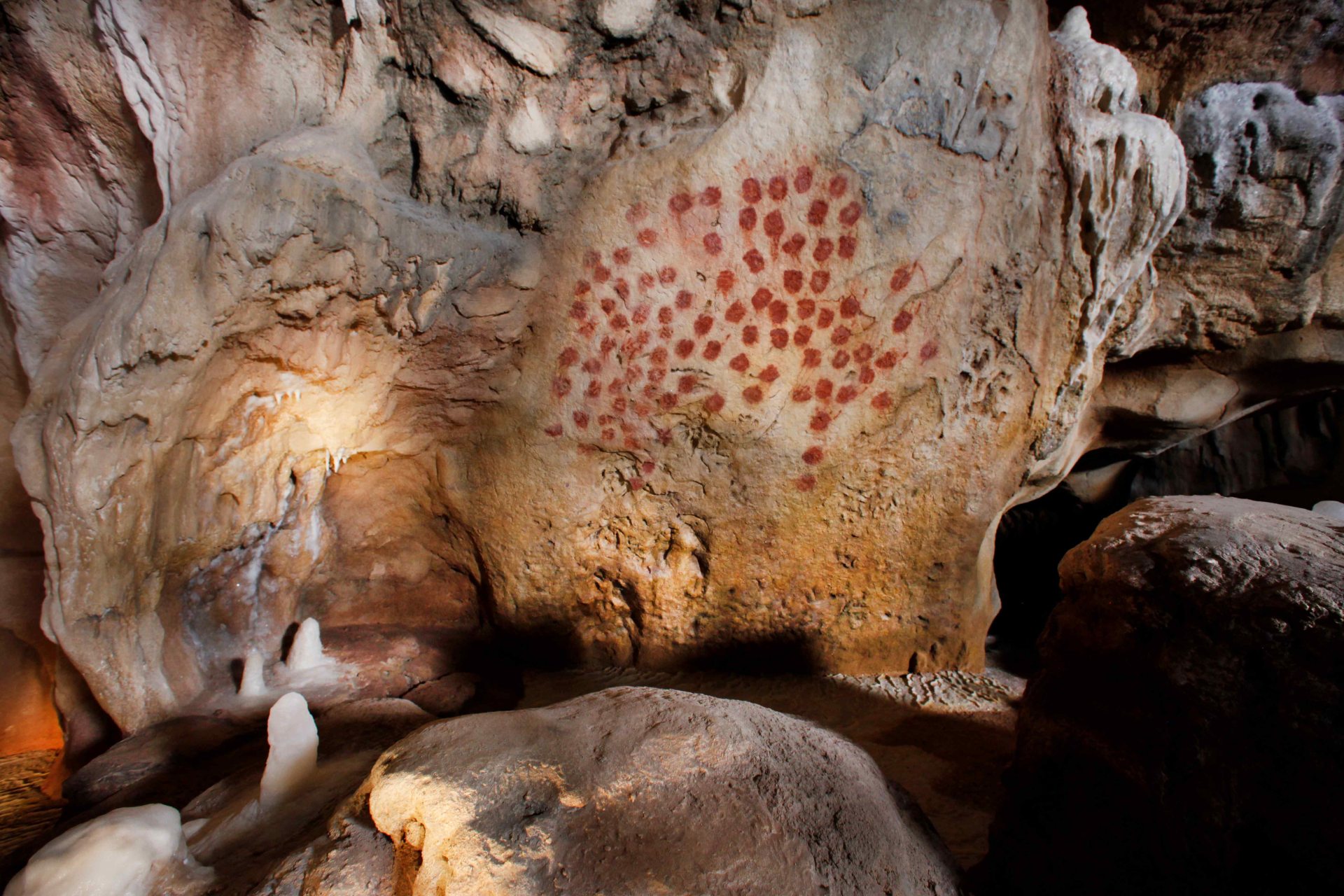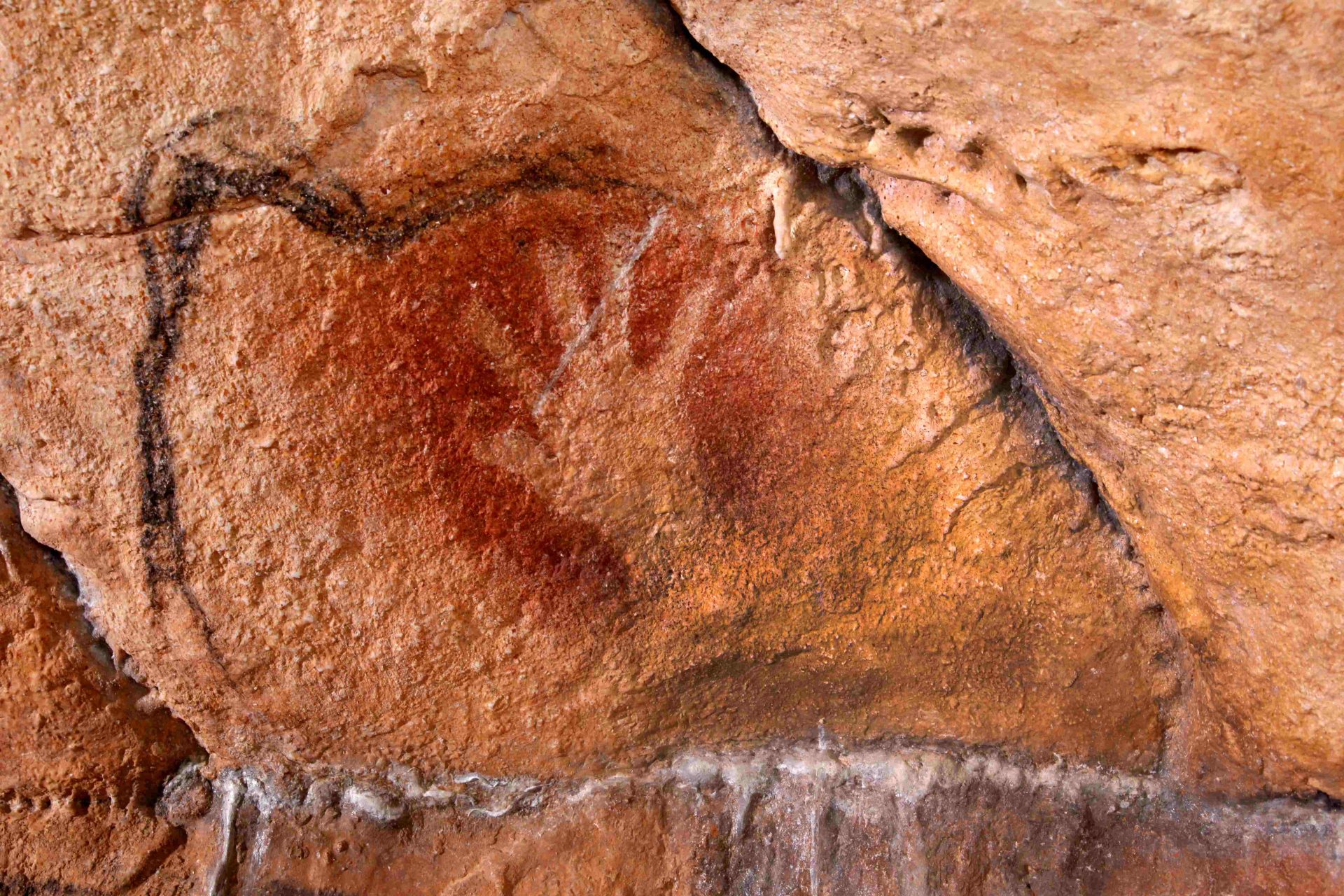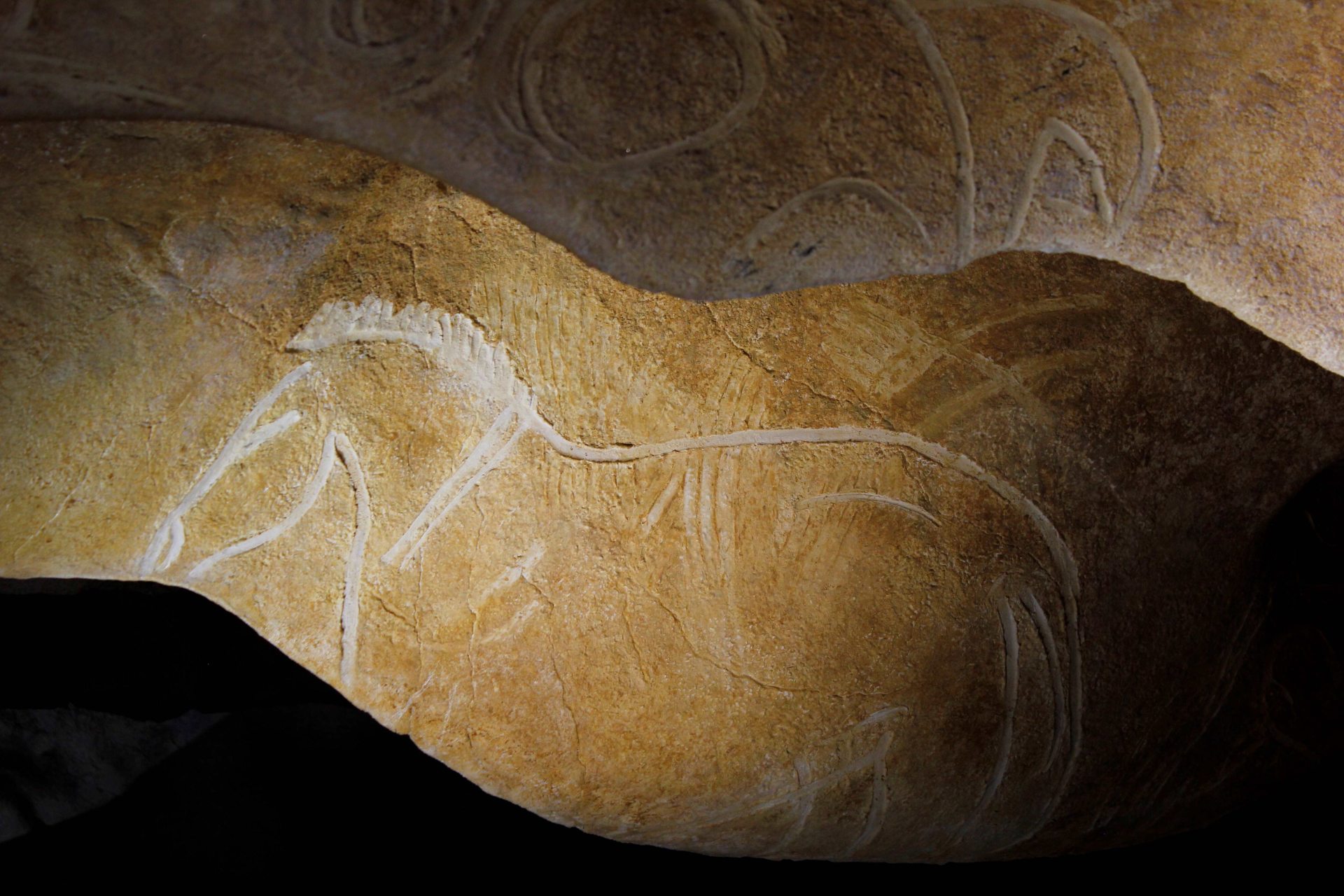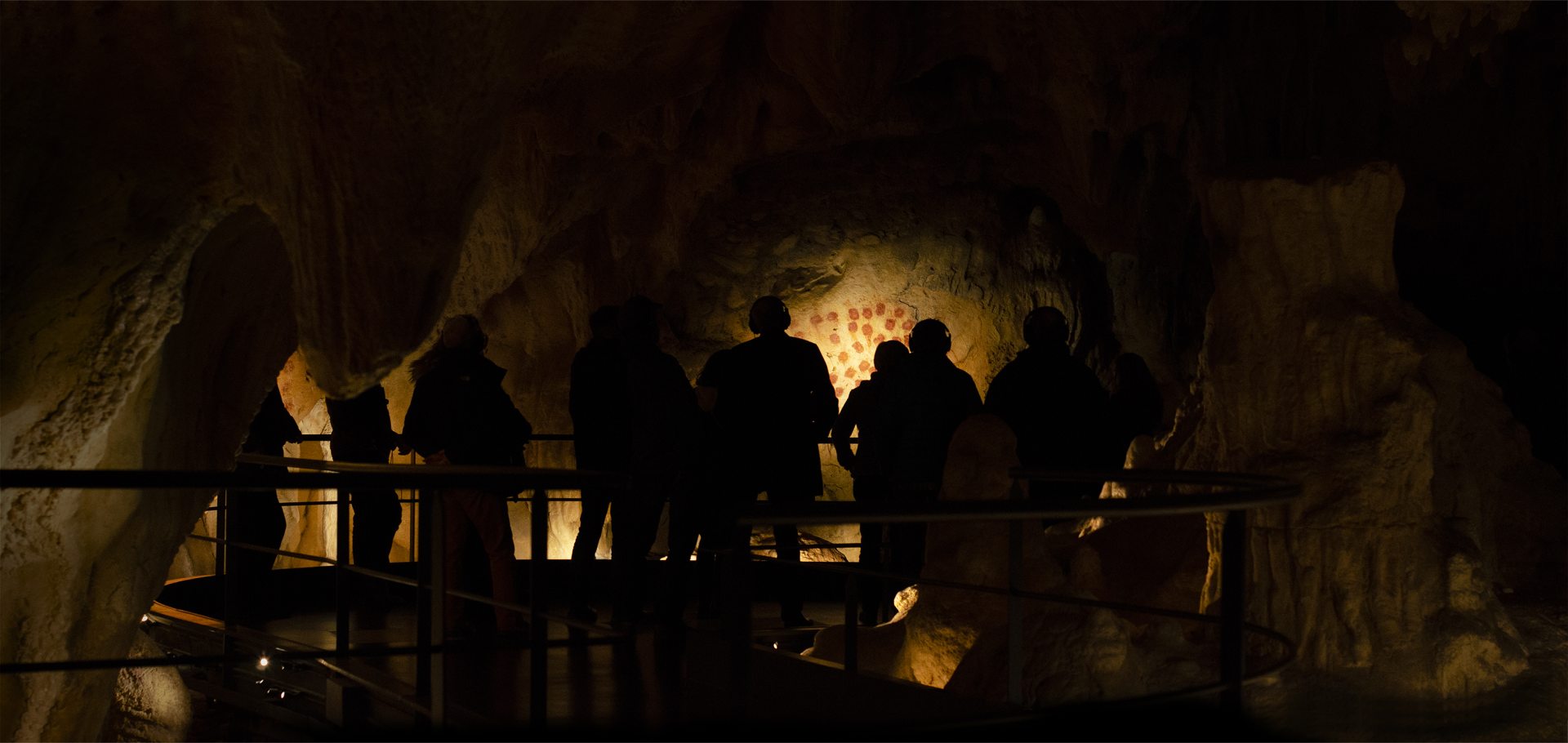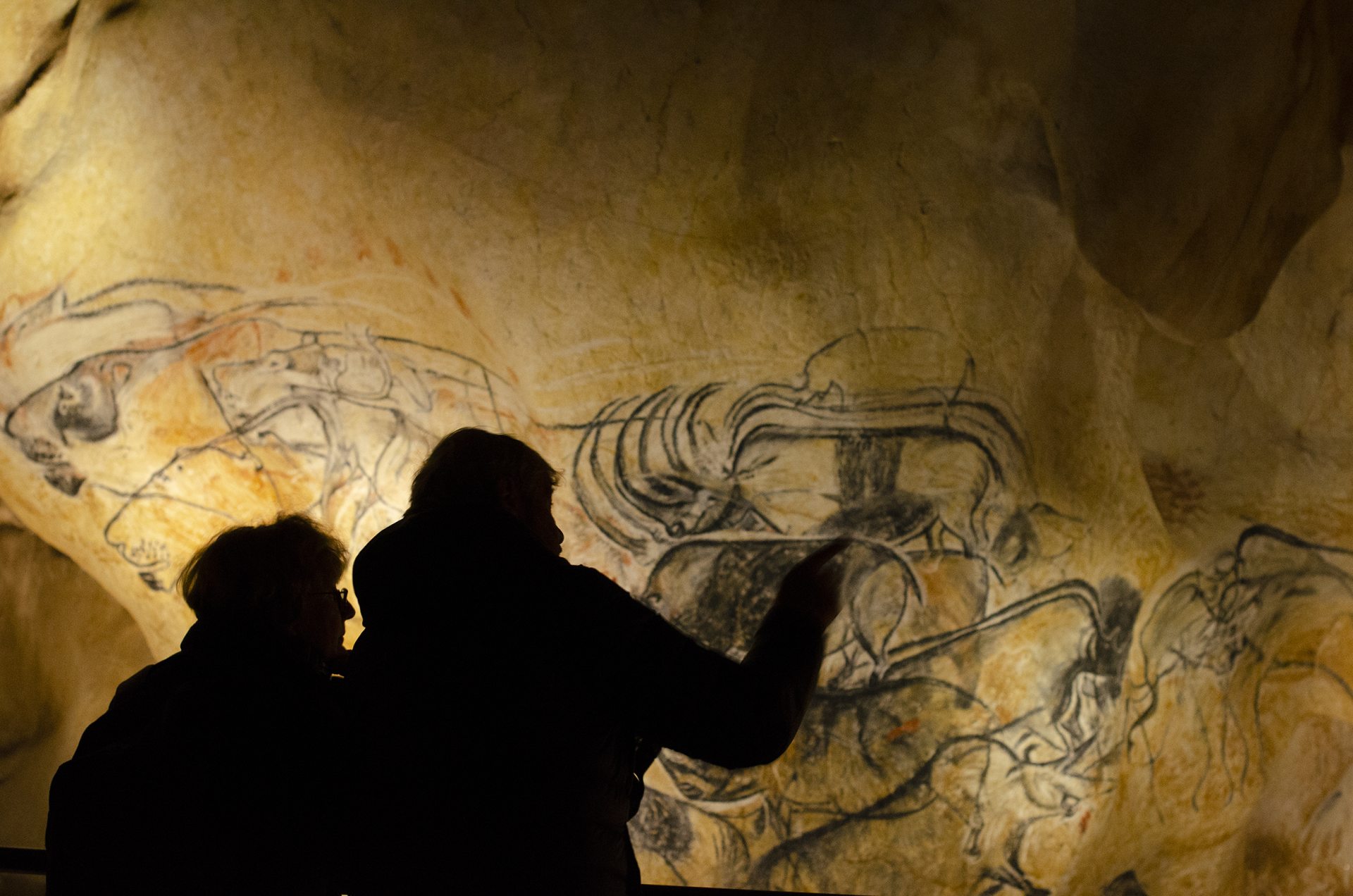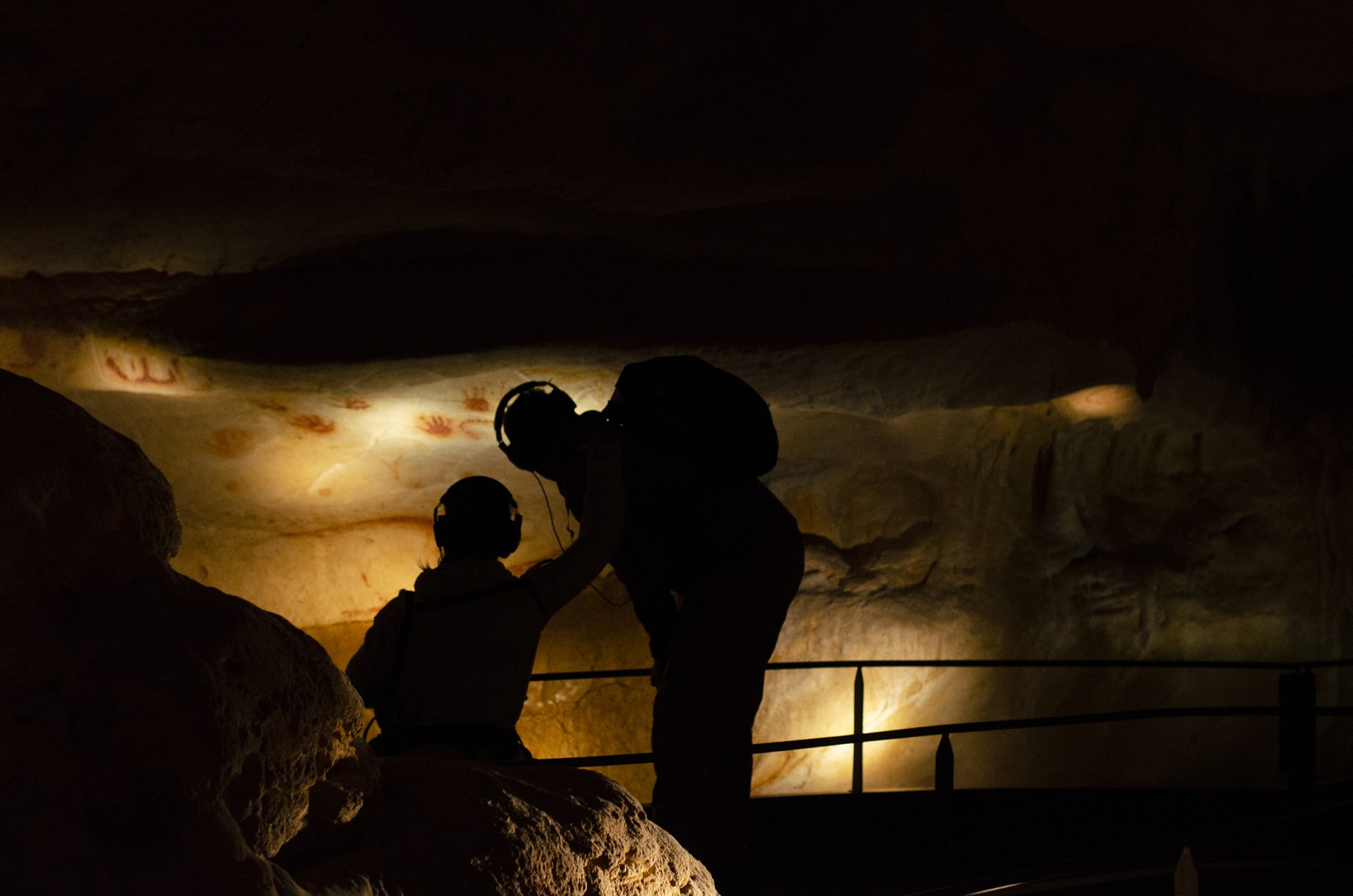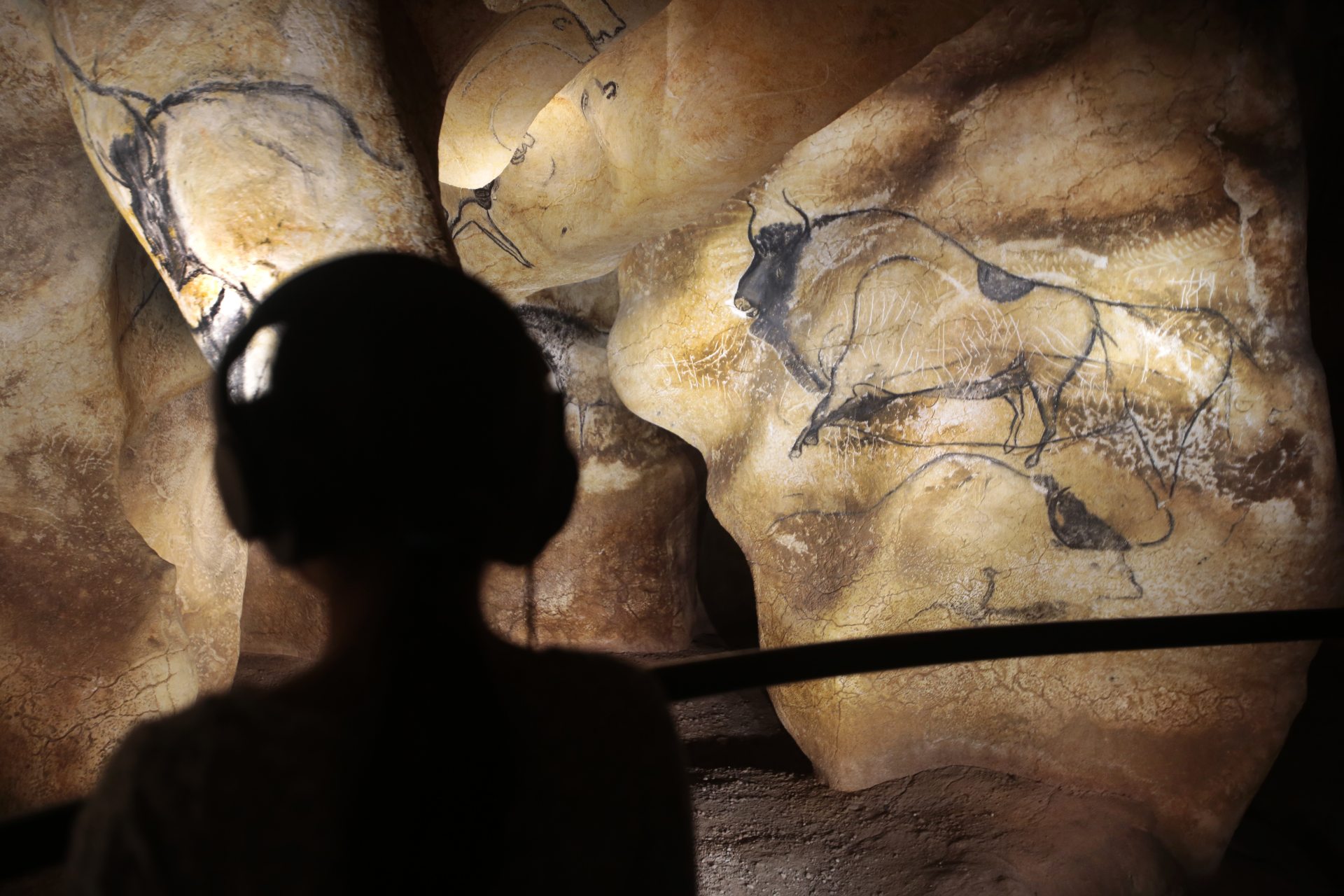A timeless experience
Between light and shadow, surrounded by stalactites, stalagmites, draperies, sinter and hundreds of bones, we can feel the chill in the air and almost hear the breathing of the 14 species of animals that are painted or carved on the walls. For one hour, we exist in another time and space, walking in the footsteps of our ancestors.
Accompanied by a guide, in a small group of around 20 people, we follow a walkway like the one in the original cave and discover the 27 different wall panels and the hundreds of animals depicted, each one more magnificent than the last.
Painted in red ochre, carved with flint, the bestiary comes to life at the hands of the prehistoric artists who had already mastered shading and perspective techniques.
After finishing the 250-metre route, which is interspersed with observation areas, the visitor enters the end chamber. 92 animals which appear to be moving rise up from the shadows. We are in front of the Lion Panel: an imposing, 12 metre-long fresco and a masterpiece of artistic talent and innovation.
Their great skill establishes these painters from 36,000 years ago as accomplished prehistoric artists, and plunges us right into the origins of art itself.
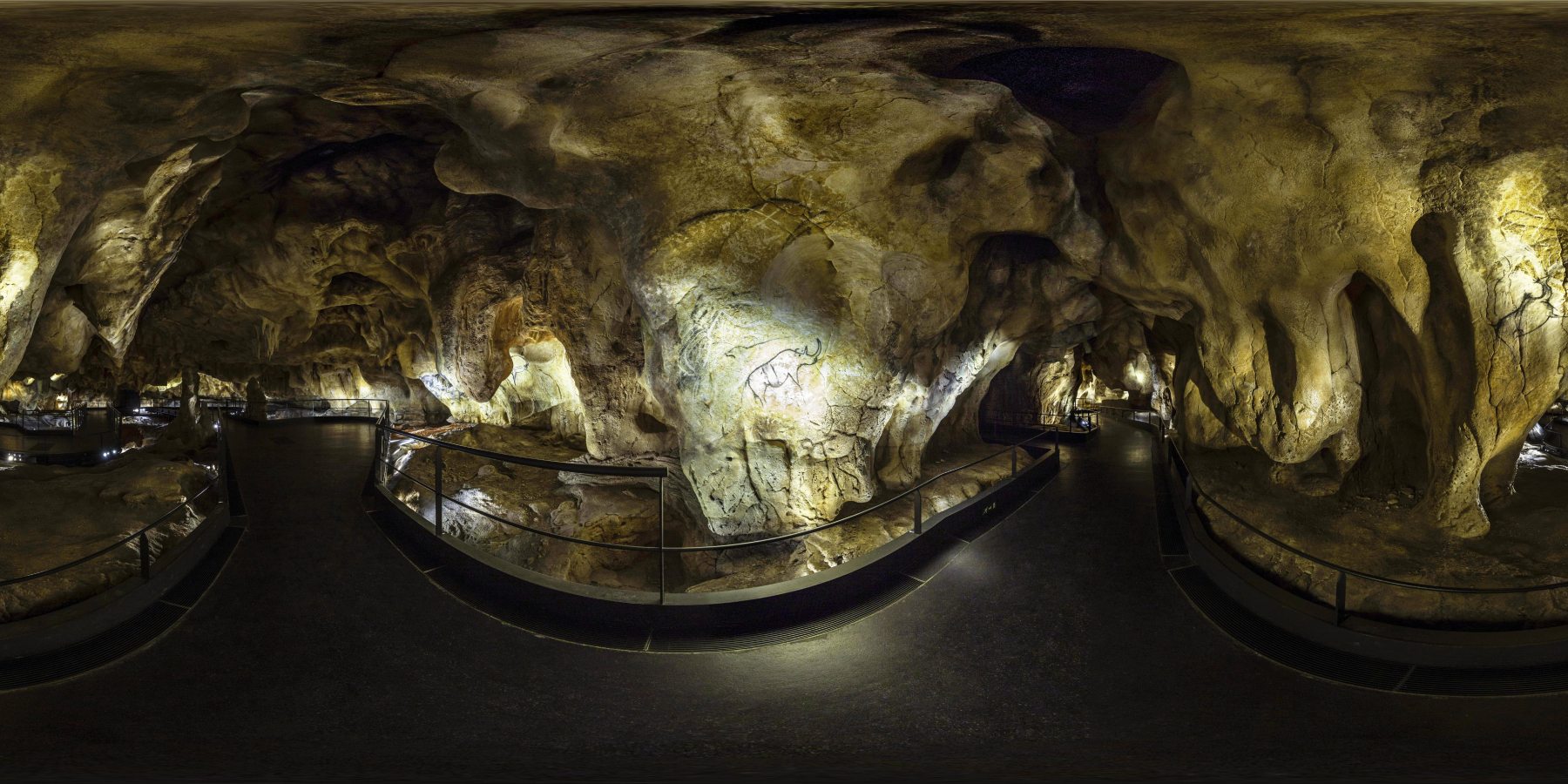
The extraordinary bestiary
More than 1000 paintings can be seen, of which 425 are animal figures. The cave’s bestiary is unrivalled in the world.
The depicted animals are mainly dangerous ones (cave lions and bears, panthers, mammoths, woolly rhinoceros), in contrast with other decorated caves where the bestiaries tend to display horses, cows or ibex. The Chauvet-Pont d’Arc cave contains more felines (80) and rhinoceros (72) than any other decorated cave in the world. Some depictions are unprecedented elsewhere in Palaeolithic cave art (panthers, owls, the lower half of the female body). This scene, which dances over the irregular rocky surface of the cave, exudes strength and power.
The very origins of art
The technique is exceptional. 36,000 years ago, the artists had already mastered all the necessary methods: surface preparation, scraping, engraving with a stone or a finger, paint-spraying with pigments, hand- and brush-painting, drawing with charcoal or red ochre, blurring, showing depth and perspective. This graphic narration brings the depicted scenes to life: hunting, fighting rhinoceros, and successive superposed images which translate rhythm or movement.
Sensory immersion and special tours
The headsets provided to visitors ensure a comfortable sound immersion experience. Audio guides are also available in 10 different languages for all our visitors: French, English, German, Dutch, Spanish, Portuguese, Italian, Russian, Chinese (Cantonese) and Japanese as well as audio description in French, English, Dutch and German.
The immersive expedition is a wonderful opportunity to experience first-hand the emotions of the team who discovered the cave in December 1994.
As well as our usual guided tours, themed tours are available depending on the events schedule and the time of year. At the end of the day, visitors can guide themselves along the tour at their own pace using the smartphone application.

